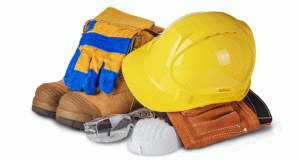A proactive culture around safety basics will stop preventable working at height deaths, says Ken Diable, Managing Director of Heightsafe
Scan the Health and Safety Executive’s (HSE) list of recent prosecutions and the risks associated with working at height will soon become clear. Despite working at height being well publicised as a high-risk activity, some employers are still not following safety basics, with the resulting injury and associated misery affecting construction and maintenance professionals across the UK.
To put this in context, between 2013 and 2018 falls from height accounted for the majority of fatal injuries to workers (1) – an average of 37 deaths every year. In construction, 47 per cent of deaths and 33 per cent of injuries were as a result of a fall from height (2).
The Work at Height Regulations were introduced in 2005 to prevent death and injury caused by falls from height. Employers, facilities managers, building owners and even the self-employed became liable to prosecution in the wake of an accident.
For FM professionals, working at height can be a weekly (if not daily) occurrence, given the wide variety of works in their remit. When looking at incidents where such work goes wrong, it may be easy to apportion blame to individual FM managers for a lack of safety planning, but this would be unfair. While individuals play a key role in mitigating risks, there are also cultural and regulatory issues that feed into the continued incidents associated with working at height.
An organisation’s safety culture has a massive impact on the way employees behave when they work at height. While health and safety culture itself is not enforceable, it can be assessed as part of an incident investigation to address outcomes resulting from a poor culture. Many organisations are driven almost entirely by compliance, with culture as a secondary consideration. This means provision of PPE and basic training are key, among other measures (see box).
In February, the All-Party Parliamentary Group on working at height released its report, ‘Staying alive: preventing serious injury and fatalities while working at height’ (3), discussing how organisations can be supported in proactively creating safety-first cultures and safety planning. However, the HSE’s 2019-20 business plan (4) published in April, makes no mention of plans to tackle Britain’s biggest workplace killer.
BACK TO BASICS
Unfortunately, in our experience it often takes a near-miss for organisations to invest in work at height equipment. That is why we propose making work at height equipment (5) a legal requirement on all new buildings and redevelopment projects – with a minimum standard set in building regulations. To mitigate costs, tax relief similar to the Land Remediation Relief could be considered.
Another possibility could be to make RIDDOR statistics easily accessible online for businesses in high-risk industries such as construction, alongside a certification scheme, providing proof of an organisation’s accident statistics. This would provide organisations with an easy way to benchmark themselves against competitors, and provide incentives to improve.
Whether or not we see stricter legislation around working at height, getting the basics right is vital – and it is arguable that culture is just as important. Creating, implementing and maintaining a positive health and safety culture is about maintaining focus on mitigating risks, but also about encouraging a positive mentality among personnel in the workplace – focusing less on blame and more on proactivity.
The responsibility for creating a positive health and safety culture can sit within various roles, dependent on the size of the organisation. Whether a large or small business, it is important to set guidelines for the safest possible work environment, to ensure personnel go home safely at the end of each working day. Starting with the basics, building a culture around getting these right can make a real impact, save lives, prevent injuries – and ensure your organisation is not the next case on the HSE’s growing list of working at height prosecutions.
TOP TIPS FOR WORKING AT HEIGHT 
- Training: The Work at Height Regulations 2005 state that as an employer or duty holder, you are required to ensure that all employees have access to work at height equipment that reflects the requirements and regulations, including training in the use of equipment.
- Fall protection systems: Current health and safety legislation dictates that fall protection systems should be in place when employees or contractors work at height (two metres or higher).
- Safe equipment: Personal protective equipment (PPE) is a vital part of protecting against the risks posed while working at height. This includes items such as safety harnesses, lanyards and karabiners – legally required when using some personal fall protection systems such as safety lines. As an employer it is your duty to ensure that employees are fully trained when it comes to selecting the correct PPE for the job.
- Inspection: Testing and compliance. The PUWER Regulations 1998 state that regular maintenance and testing of work at height equipment and PPE is required to remain compliant. If your systems are not visibly tagged and in compliance, it may not only invalidate your insurance, but could also lead to prosecution should an employee, contractor or even trespasser suffer injuries.
(1) www.hse.gov.uk/statistics/causinj/kinds-of-accident.pdf
(2) www.hse.gov.uk/statistics/industry/construction.pdf
(3) https://workingatheight.info/wp-content/uploads/2019/02/Staying-Alive-APPG-REPORT.pdf
(4) www.hse.gov.uk/aboutus/strategiesandplans/businessplans/plan1920.pdf
(5) www.heightsafesystems.com/products
More advice on safe working at height is available at www.heightsafesystems.com/blogs




